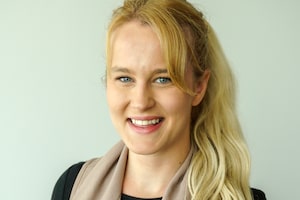The body that runs Canada’s university sports system has signed up a U.S. marketing powerhouse to work on a national strategy to secure millions of dollars from Canada’s corporate giants.
U Sports, the governing body for athletics at 56 Canadian universities, hopes to pull in tens of millions of dollars via the partnership with International Management Group (IMG). The effort is part of a years-long overhaul of university sports in this country under Graham Brown, a former Rugby Canada executive who has been chief executive and president of U Sports since 2015.
Mr. Brown shut down the Ottawa office, moved the headquarters to Richmond Hill, Ont., and shed the organization’s former name, Canadian Interuniversity Sport (CIS). Now, with IMG’s help, U Sports is looking to consolidate sponsorship opportunities across schools and athletic conferences into one package. Their asking price is $7-million a year, for five to seven years, and their first targets are banks and financial institutions.
Currently, the efforts of Canadian university sports are fragmented – with individual schools finding their own sponsorships.
“No university athletics department is getting any sponsor for more than six figures,” said Sam Galet, head of Canadian operations for IMG.
That stands in contrast to the kinds of sponsorship deals U.S. schools get – such as a deal between Under Armour Inc. and the University of California, Los Angeles, that goes for 15 years and US$280-million.
In the United States, Mr. Galet’s colleagues at IMG market college sports to national sponsors, and those lucrative deals funnel millions of dollars back into athletics departments and their young athletes.
Mr. Brown and Mr. Galet agree that marketing for Canadian university sports has been weak on a national level – despite efforts from individual athletic departments. Pure corporate sponsorship of Canadian university athletes – where a company pays for marketing and exposure – is only bringing in about $4-million or $5-million a year, by Mr. Brown’s most recent estimate. But that doesn’t include philanthropy, procurement deals or other local sponsorship, which brings the total closer to $15-million.
Money is only one reason Canada’s top high school athletes tend to pursue their dreams south of the border. For example, R.J. Barrett, the Mississauga teen and MVP of Canada’s FIBA under-19 World Cup basketball team last summer, will be playing for Duke University this fall. “The blue-chip athletes don’t see Canadian university sports as a pathway,” Mr. Brown said.
Still, some talent does stay north – athletes such as Andrew Buckley, who came up through the University of Calgary’s football program before beginning a pro career as a quarterback for the Calgary Stampeders.
Mr. Buckley said that staying in Canada meant an opportunity for high-quality academics at a generally lower cost. But being a student-athlete was still expensive.
“As a football team, we’d be at the stadium from 3:30 until 9:30 at night, and we wouldn’t have a meal provided or anything like that,” Mr. Buckley said. “It’d make for some long, hungry nights.”
During the summers, training and extra course work meant limited time to get a good job, straining finances further.
Another benefit to larger sponsorships could be TV exposure. It could boost the profile of Canadian athletic programs and allow far-away family to watch games. Although some marquee events are televised nationally, the broadcasting profile of university sports is far smaller in Canada than in the United States, where events such as college basketball’s March Madness tournament draw massive audiences.
Financial institutions are the first target for U Sports because “it’s probably the category that’s spending the most money, is most competitive and has the most resources to spend on something like this,” Mr. Galet said. “And we also know that every financial-services company is looking to talk to millennials.”
Mr. Galet and Mr. Brown aim to have one sponsor signed on by Sept. 1. Eventually, they’ll turn their sights to the automotive industry, professional services, technology and telecom as well. And, both men assert, they aren’t looking for philanthropy.
“This is about a real marketing campaign, real money, being accountable, putting a proper framework where you’re going to be monitored, monetized and you’re going to be evaluated on it,” Mr. Brown said.
“And that’s a whole different concept.”
 Victoria Gibson
Victoria Gibson